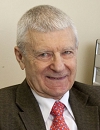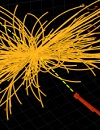 |
||
|
Russian Mars Water Sniffer Goes Online RIA Novosti, PUBLISHED August 20, 2012 A Russian neutron detector on board NASA’s Mars rover Curiosity, designed to search for any water that might be bound into shallow underground minerals along the rover's path, was activated on Friday, the manufacturer said. “The first scientific information has been received about the substance of Mars and its radiation background in the landing area,” the Russian Academy of Sciences Space Research Institute said. Curiosity successfully touched down on the Red Planet last Monday. The DAN detector, developed at the Space Research Institute under an agreement between NASA and Federal Space Agency Roscosmos, is Russia’s contribution to the Mars rover. The Dynamic Albedo of Neutrons instrument, or DAN, will scout for underground clues to a depth of about 50 centimeters. DAN will bring to the surface of Mars an enhancement of nuclear technology that has already detected Martian water from orbit. By measuring the energies of the neutrons leaking from the ground, DAN can detect the fraction that was slowed in these collisions, and therefore the amount of hydrogen. The neutron generator is mounted on Curiosity's right hip. A module with two neutron detectors is mounted on the left hip. With pulses lasting about one microsecond and repeated as frequently as 10 times per second, key measurements by the detectors are the flux rate and delay time of moderated neutrons with different energy levels returning from the ground. The generator will be able to emit a total of about 10 million pulses during the mission, with about 10 million neutrons at each pulse, NASA said. The service camera installed on the $2.5 billion plutonium-powered rover has sent the first photos from the landing site in the Gale Crater, including one showing a wheel of the rover on the surface. Curiosity, the biggest and the most scientifically complex Mars rover, will gradually turn on its scientific equipment to carry out geological and geo-chemical research, to study the planet’s atmosphere and climate, and to search for water and organic substances. Its findings will help to determine whether Mars was ever a habitable planet and whether it has any suitable places for habitation now. It is NASA's first Mars landing since the Spirit and Opportunity rovers touched down on the Red Planet in 2004. Topics: Russia Other news: Bushehr Nuclear Plant to Run at Full Capacity in August Bushehr is planned to reach 100 percent capacity this August. Russia, Belarus Sign $10 Bln Nuclear Power Plant Deal The contract was signed in the presence of Russian Prime Minister Dmitry Medvedev and his Belarusian counterpart Mikhail Myasnikovich. Russia, India Agree Additional Kudankulam NPP Financing The document signed on Tuesday in Moscow. |
Hero of the day 
Jacques Repussard: knowledge, independence, proximity They told me: "Mr Repussard, we're not used to responding to anti-nuclear organisations". To which I replied: "We will not reveal any state or trade secrets, but we will not leave them without any answer". INTERVIEW
Georgy Toshinsky OPINION
Natalia Antonova |

